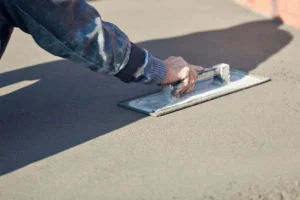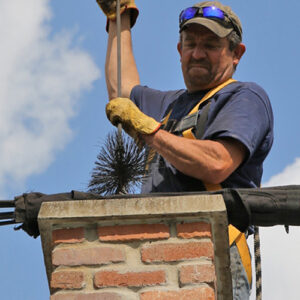Concrete Repair Colorado Springs requires the proper knowledge and expertise of a professional concrete contractor. A qualified contractor will ensure that all factors causing damage are addressed in the design and execution of repairs.
The surface to be repaired should be free of dust, loose debris, and oil. Concrete surfaces should be dampened before applying the repair concrete. Dry concrete robs water from the repair material, resulting in a weak bond and drying shrinkage cracking.

Recognizing structural concrete problems like cracking or honeycombing is easy, but identifying the cause is much more difficult. Depending on the root of the problem, corrective action may be as simple as epoxy injection. In many cases, however, the underlying issue requires more in-depth work to restore the structure’s performance.
Generally, the surface must be clean and dry for a good bond with concrete repair materials. Surface contamination includes oil or grease, mildew, rust stains, and any other stain that prevents topical material adhesion or penetration. The concrete surface must contain loose or damaged fragments that can interfere with proper concrete placement and curing.
For larger repairs, the concrete may need to be cleaned by chipping away any delaminated areas and pulverizing to sound, well-bonded concrete with a hammer or a demolition blade. Small honeycomb areas can be cleared by sawing to a solid, well-bonded section and then brushing or blowing clean. This can be done before the concrete is coated or overlayed.
If the repairs are to be made with concrete, the mix should be more dense than typical and typically contain less water to reduce shrinkage. A standard repair concrete mix can be a commercially available concrete blend or a proprietary mixture.
When repairing a vertical section of concrete, forming may be necessary to ensure a strong, mortar-tight seal. If the repair is made with a thin layer of concrete, say, 2 inches or less, it’s usually advisable to use a bonding agent.
A concrete surface profile, or CSP, is the key to successful application for most overlays or coatings. The International Concrete Repair Institute has developed benchmark guidelines for CSP, which range from a low of 1 (nearly flat) to a high of 9 (very rough). The institute sells profile replica blocks to help contractors assess a concrete surface.
The concrete repair mixture must be properly formulated based on design specifications and the expected in-place service environment. The mix must have adequate workability to facilitate placement, formability, a smooth finish, and good durability.
The gradation of the aggregates, cement, fly ash, and water must be consistent, and the mix should contain sufficient coarse aggregate to achieve proper compaction of the repair material. This will prevent the fines’ segregation, reducing the repaired section’s final strength. Adding admixtures such as fly ash and silica sand can provide better workability, water retention, and surface porosity, but these materials are only necessary in some cases.
Concrete repair mixes can be prepared from ready-mix concrete delivered from a local plant, site-batched concrete from a mobile mixer, or various pre-blended bagged repair mortars and concrete. Each type of repair mixture has a unique set of properties, including handling characteristics, rheology, and cure times. These properties are designed for specific installation procedures such as form-and-pour, tremie concrete, dry pack, and trowel-applied vertical and overhead concrete repairs.
When repairing cracks in existing concrete, the old concrete should be clean and free of contaminants such as oil, grease, or other pollutants that can affect the bond between the new repair material and the existing concrete. The crack should also be thoroughly cleaned to minimize the development of differential shrinkage cracks in the new and old concrete.
Once the concrete repair material has been placed, it must be protected from extreme conditions while in a plastic state. This will avoid moisture loss, drying shrinkage, cracking, and curling of the concrete.
The concrete should be kept moist by covering it with a damp burlap sheet or wrapping it with plastic. Keeping the concrete in a plastic state for at least three days is important to promote properly curing the repaired area.
If the crack is in a structural member, it may be possible to repair it by stitching the concrete with U-shaped steel bars of different lengths. Stitching bridges the two sides of the crack to spread the stresses in the crack over a larger area, thus reducing the potential for shear and bending failures in the repaired region.
Concrete replacement is a major job with a big price tag. It involves tearing out the old concrete, replacing it with new concrete, and then waiting for it to cure properly before you can use the area again. It can also be dangerous, depending on the nature of the concrete.
The most effective way to repair concrete is by using a concrete repair product. These products come in paste, epoxy, or polyurethane and are designed to bond with existing concrete. The best concrete repair products will offer excellent durability and long-term performance. They are also designed to work in a variety of environments. They should be safe to use and easy to apply.
When applying a concrete repair product, the surface must be clean, loose, and debris-free. Any honeycomb areas should be chipped or sawed out, then blown or brushed to remove any unsecured aggregate and ensure the repair area is sound concrete.
After preparing the surface, the liquid bonding agent must be applied to the repair area and allowed to dry until it is tacky. The concrete repair material is poured or troweled over the bonding agent and into the damaged area. It is important to follow the manufacturer’s instructions when pouring concrete.
Concrete repair materials should be simple and require low hydration levels for maximum durability. They should have good compressive strength and a high percentage of coarse aggregate to minimize shrinkage, cracking, and spalling. The concrete repair material should withstand abrasion, corrosion, and impact loads. It should also have a low water/cement ratio and good permeability to resist chloride leaching, freeze-thaw damage, and deicing salts.
In addition to the physical properties of a concrete repair material, constructability is also important. Constructability is a property that encompasses handling characteristics, rheology, and cure time. The factual repair material must be capable of being pumped and placed in a variety of procedures, including but not limited to forms, pre-placed aggregate repairs, tremie concrete repairs, dry pack vertical and overhead repairs, and low velocity wet sprayed shotcrete repairs.
The finish of concrete is critical to its performance and durability. It is a part of the overall system that must be designed to handle internal forces like shear and bending in floors and tension zones in walls. It must also be durable against weathering, chemical attack, and wear.
For concrete repair, finishing should begin with thoroughly inspecting and evaluating the damage. This will allow you to decide what repairs are necessary, how the damage will impact the service life of the concrete, and if any structural integrity issues have been affected. A competent contractor must be used for any structural repairs.
Many concrete repair materials are available for repairing cracked or damaged concrete. These include ready-mix concrete delivered from a concrete plant, site-batched concrete mixed with a mobile mixer, and various formulated bagged concrete repair mortars and concrete.
The best choice of concrete repair material is compatible with the existing concrete in terms of strength, durability, and cost. It is also important that the repaired concrete be able to bond with the old concrete to prevent future cracking and movement of the existing structure. A low w/c and a high percentage of coarse aggregate are required to repair concrete to minimize shrinkage cracking.
In some cases, concrete replacement is a desirable solution, especially when the honeycombing is severe. However, care must be taken to ensure the replacement concrete is properly designed and placed to avoid future problems.
Once the concrete is poured and leveled, it should be compacted using a hand tamper or mechanical vibrator to ensure that the new concrete is properly consolidated. After packing, a water wash may remove excess water and help reduce the concrete. It is also recommended that the concrete be lightly textured after the wash to create a more visually appealing surface.
Concrete repair must be adequately moist-cured to achieve its full strength and durability. A long, dry curing period will cause the concrete to lose some strength, increase its susceptibility to abrasion, and weaken it significantly. The moisture content of the concrete must be checked regularly, and adequate measures must be taken to prevent it from drying out.
